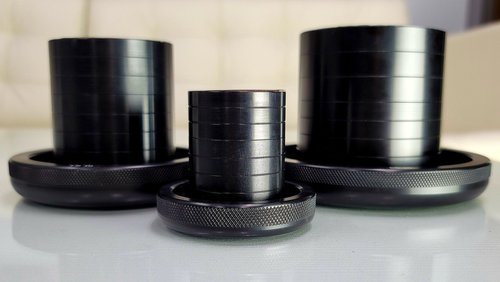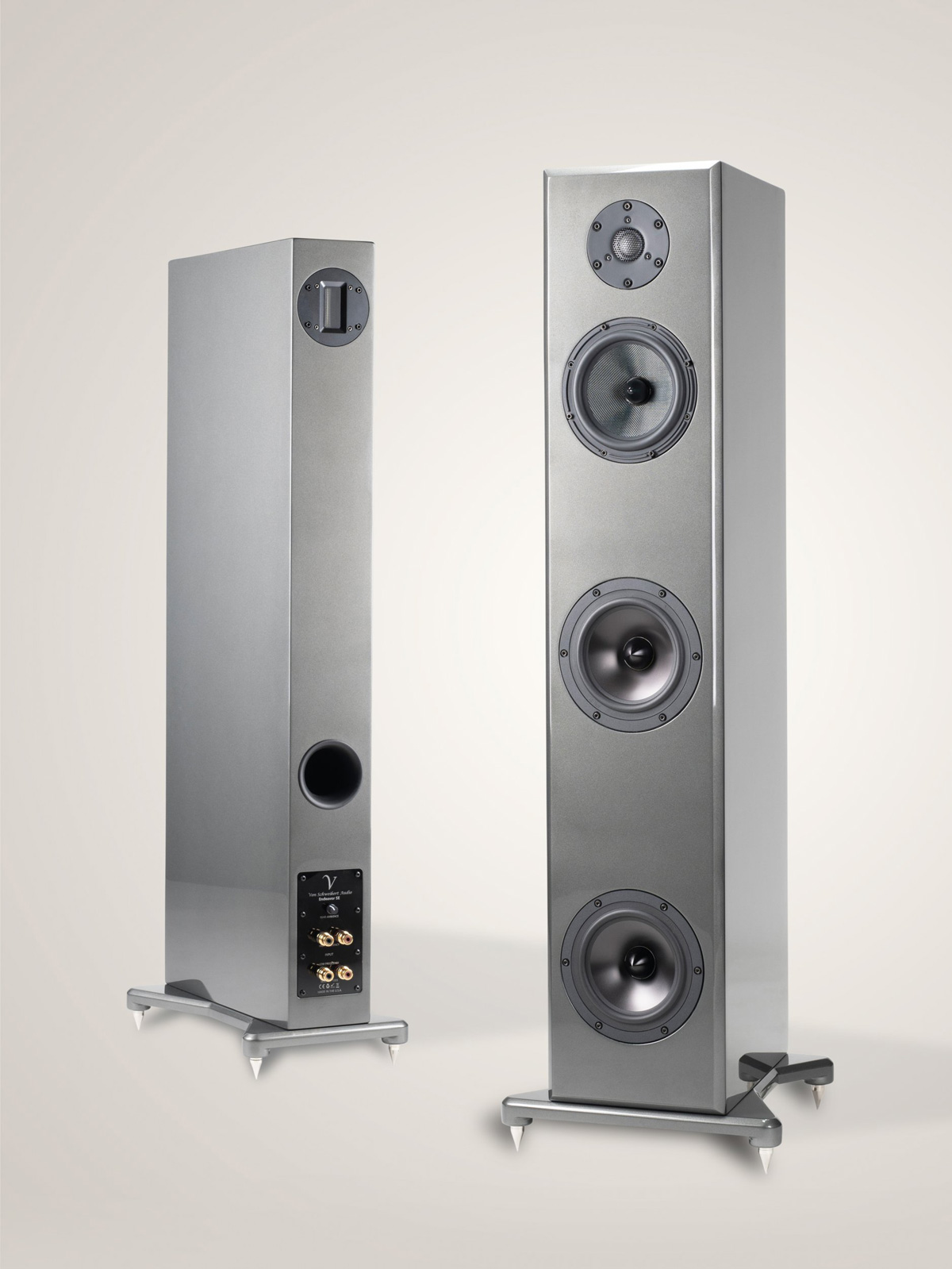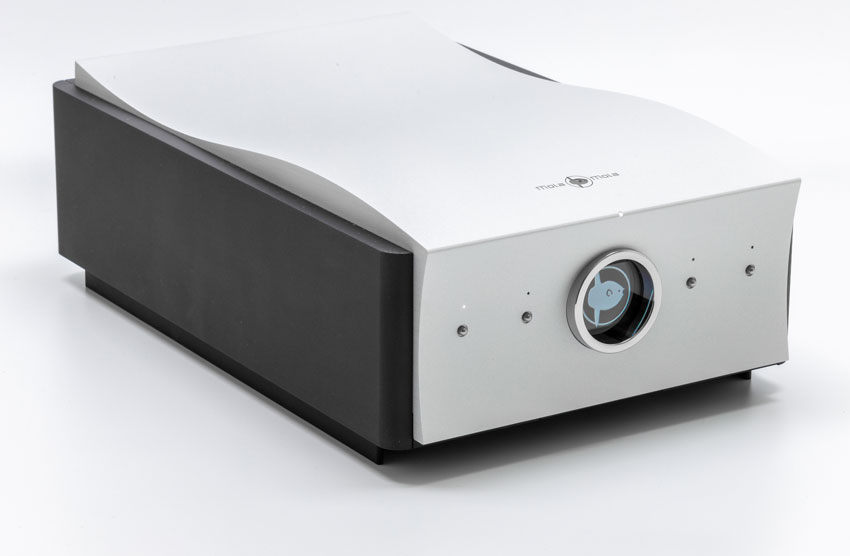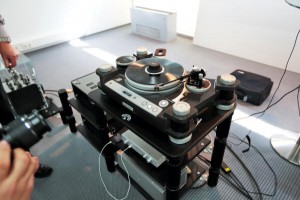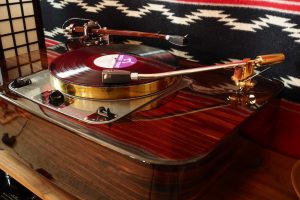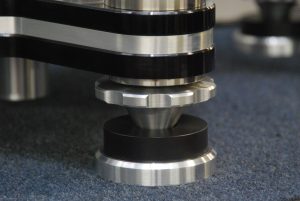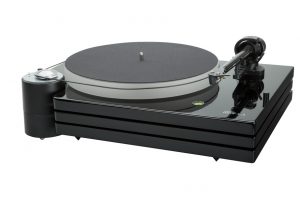Up the Long Ladder

Maurice Jeffries at GTT Audio: a portrait. Long Valley, NJ, 2021
I won't rehash here either the science behind KRONOS Audio's remarkable line of turntables, or the engineering insights that led Louis Desjardin, the turntable design world's current enfant terrible, to pursue his revolutionary approach to turntable design. Instead, I'll begin by addressing a familiar refrain levied against all turntables, their dedicated designers, and the reviewers and consumers that delight in playing decades-old vinyl treasures (plus the occasional new release of reissue) on these outdated mechanical contraptions: that we remain, one and all, delusional luddites wed to an outdated technology demonstrably incapable of reproducing high resolution sound.
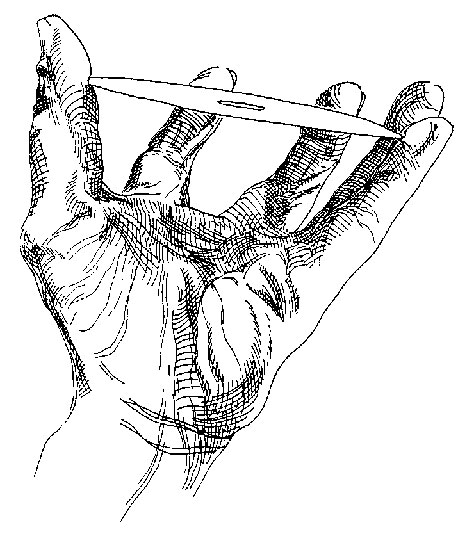
Echoing this shopworn refrain, I recently came across a piece in the New York Times that charted the recent rise of cassette tapes and cassette decks as the latest nostalgia-fueled audio fad. The author lavished considerable energy lambasting the technical limitations and flaws of the cassette medium, noting by way of contrast, the ability of the humble CD to reproduce "flawlessly" (whatever that means) the entire audible range of sounds from 20Hz to 20kHz. He then lambasted LP playback for reasons essentially identical to those levied against the humble cassette, noting that even high-quality turntables added considerable amounts of noise to recordings, something even the cheapest of CD players avoided.
I mention the NYT piece not to pick on its author, but to highlight a perception shared by many audiophiles and music lovers, namely that LP playback by design cannot deliver high-resolution sound quality. Those readers familiar with my reviews in these pages know that I remain wedded to both the digital and analog formats, with perhaps a slight preference for streaming sources and DACs. My admiration for the latter class of components owes to their remarkable convenience, the astounding depth and breadth of recordings available to music lovers, and the excellent sound quality that the best digital devices can deliver.
And yet, and yet, ten minutes of listening to a reference system that featured all the great gear that Dr. Robinson so capably will list in his article, plus the darling of the ball, trouble-maker Louis Desjardin's latest masterwork, the KRONOS Discovery turntable and stellar KRONOSOCPE 12" tonearm, was all it took to throw most of my audio preconceptions (and a couple of deeply held misconceptions) out the proverbial window. Without mincing words, the Discovery/KRONOSOCPE/SCPS system has forced me to rethink what vinyl replay is capable of sonically, and to abandon the long-held belief that digital audio in its various iterations and formats presently approaches the musicality and naturalness of the best analog sources.
After a weekend listening to the D/K/S system I can say unequivocally that it presently cannot.
Stated another way, the Discovery/KRONOSOCPE/SCPS system heralds a new paradigm in vinyl replay, one that eviscerates, from the ground up, what most of us imagined were the demonstrable outer limits of the medium. At the same time, the D/K/S combo makes abundantly clear that digital replay still has a long road to travel before it can match the realism, life, and tonal expressiveness of vinyl replay at its absolute best.
Oh, Yea Eternal Doubting Thomases
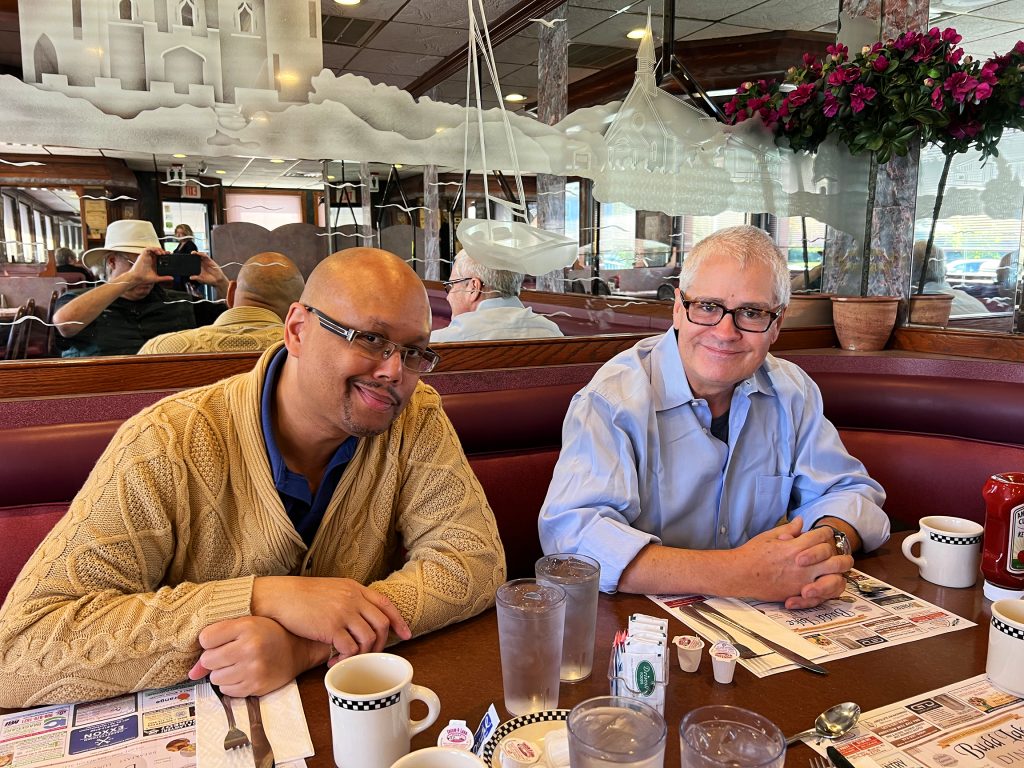
Maurice Jeffries and Louis Desjardins of KRONOS: a morning moment
Hearing the D/K/S system for the first time, in a first-rate listening environment (here, the big room at GTT Audio & Video's New Jersey headquarters—thank you Bill Parish and Louis Desjardins for a couple of great days up north), backed by first rate electronics and top-flight speakers, will for most listeners prove revelatory. I say most listeners because I suspect that some who hear this system will still stubbornly cling to the sonic illusion (delusion?) that their $200 CD players provide better, smoother, quieter sound, and that the so-called benefits the D/K/S system delivers amount to little more than carefully sculpted noise artifacts and sonically pleasing distortions. For everyone else, meaning any open-minded listener curious to hear what the best can deliver, you are in for a treat.
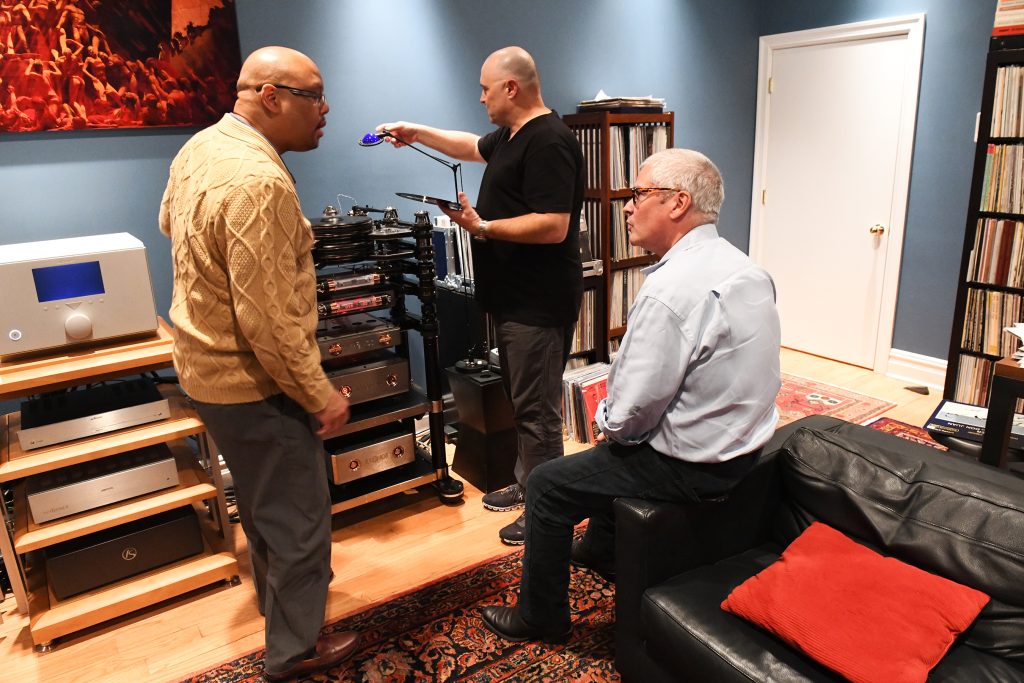
Maurice Jeffries, Bill Parish of GTT Audio, and Louis Desjardins of KRONOS prepare for another extended listening session with the Discovery turntable system
While I have yet to come to terms with everything that the D/K/S combo is capable of musically (David is spot on when he refers to the D/K/S combo as a sui generis system, and its sound as a listening experience sui generis), four aspects of its "sound" stand out. First, the system reproduces great vinyl (properly cleaned and cared for) just about as noiselessly as a good CD player. Those readers fortunate enough to own the stellar reissue of the RCA Living Stereo masterwork Albeniz: Iberia Complete [Analogue Productions] will marvel at the absence of the gentle "whooshing" artifacts that one hears with even very good vinyl playback systems. I can't convey the importance of this sonic advance emphatically enough. For the first time in my life, I got to hear some of the best analog discs ever recorded played without my having to apologize for the annoying pops, ticks, and gentle swoosh-swooshing that vinyl addicts accept as the inevitable sonic cost of entry.
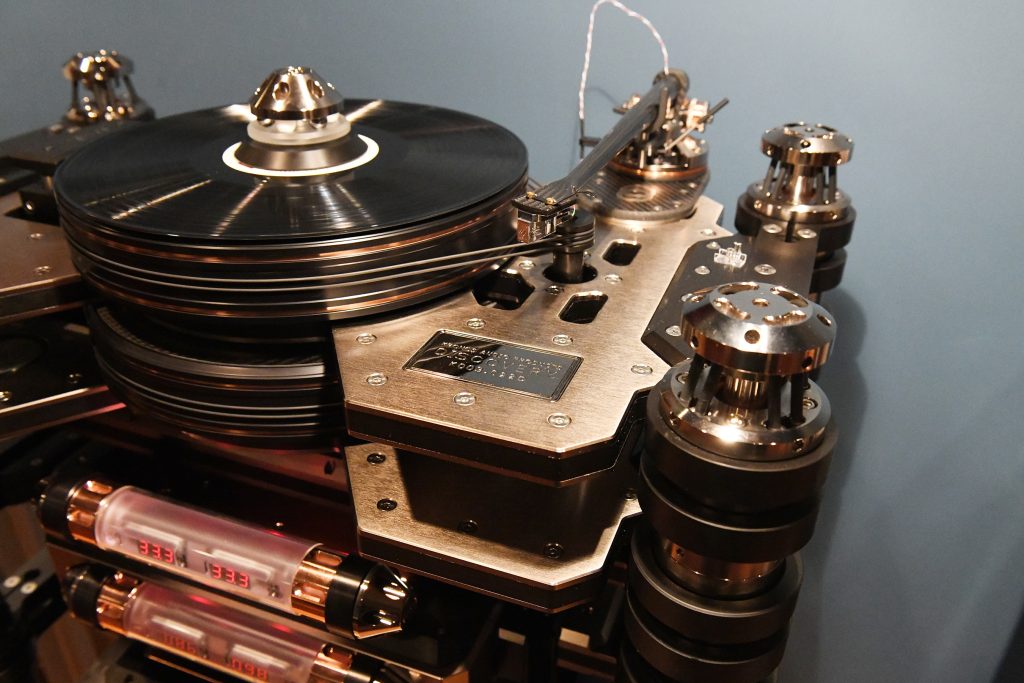
Whatever magic dust Desjardins has sprinkled over his latest creation it has gifted the system with the lowest amount of audible self-noise that I have ever encountered. Wow and flutter seem non-existent, this noiselessness allowing clean LPs to deliver essentially noiseless music.

Second, and as one would expect, the D/K/S combo's noiselessness rewarded with an unprecedented (at least in my experience) resolution of fine recorded detail. On the Albeniz disc, one could easily hear the walls of the recording venue breathe and flex as if alive, an experience hard to describe but easy to recognize when it occurs. On another reference favorite, Mobile Fidelity's stellar reissue of the Solti Beethoven 9th [London/Mobile Fidelity], I heard for the first time in the adagio molto e cantabile movement the French horn player entering distinctly sharp in tone. The player quickly eases off the pedal, no doubt the victim of a menacing Solti scowl, only to re-enter the picture with instrument properly in tune a moment later. The idea that a musician in one of the worlds' truly great orchestras would make a mistake like this seems unimaginable, but also all too human. In this instance, the D/K/S combo's resolution of fine detail reminds us that the musicians behind the recordings that we cherish so dearly are flesh and blood at the end of the day, and not above the occasional musical misstep, even the greats.
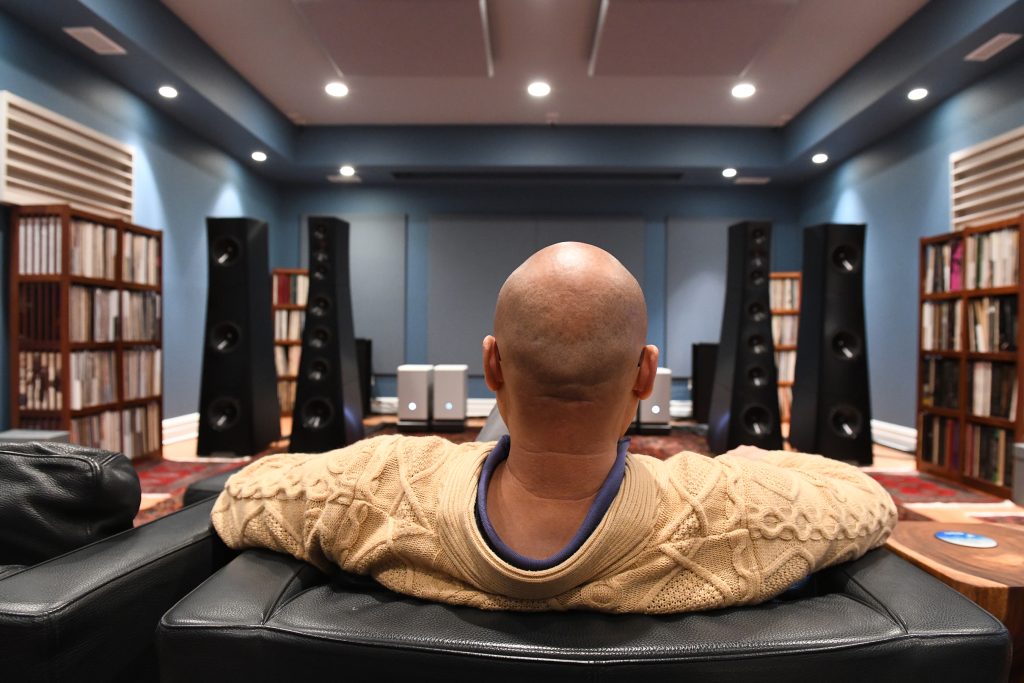
Maurice, in the moment: a portrait.
The third aspect of the sound that stood out for me was the incredible bass power the system delivered. Bass notes possessed not just beneath-the-floor weight and power, but unprecedented pitch precision and timbral refinement. This unrivalled low-end focus supported the overall system's ability to image and sound stage with gravity defying dimensionality, oodles of air, and an almost physical palpability and bloom that left me speechless at times. Every recording we played, from the most densely orchestrated and scored classical discs, to raucous rock masterworks, to intimate jazz standouts from the later 50 and early 60s benefitted from the system's superior dimensionality.
To put things into context, on day one of our group listening sessions, Bill took a break to entertain a client from the West Coast, one eager to audition a very expensive solid-state integrated amplifier (the Audionet HUMBOLDT, a unit that I lived with for several months and now know well) for purchase. Bill and I spent about an hour with the client listening to digital tracks played over a HUMBLDT/Mola Mola Tambaqui DAC/YG Acoustics Hailey 2.2 loudspeaker system. The sound was quite good. But, as soon as the client left, Bill and I turned to one another, our heads shaking in unison. What sounded great to the client sounded flat, lifeless, two dimensional, and tonally gray to us. Yes, you read that right: compared to the D/K/S-fronted system, a digitally sourced system that topped the low six figures pricewise sounded, by comparison, dimensionally flat, tonally bleached, and short on micro-dynamic expressiveness. Taken on its own merits, the smaller system exhibited none of these sonic shortcomings. But, in a head-to-head comparison, the analog sourced system walked all over its digital counterpart in every way that matters musically.
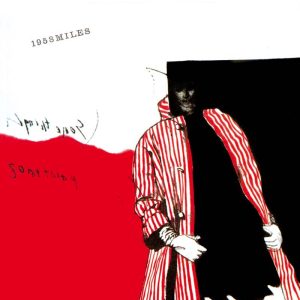
Finally, the D/K/S fronted system allowed me to discern musical intent more effectively than any system in my experience. One of Bill's vinyl jazz treasures, 1958 Miles [CBS/Columbia], a 1974 re-release of two earlier Miles Davis releases dating from 1958 and 1959 and featuring Davis, John Coltrane, Cannonball Adderly, Bill Evans, Jimmy Cobb, and Paul Chambers, made the point emphatically. Miles loved re-interpreting the Great American Song Book. With players as versatile as Adderly, Trane, Evans, Cobb, and Chambers, Davis could experiment with shifting tempos and key signatures at will, playing a bit ahead of or behind the beat here, or instructing pianist Evans to play a major seventh chord up by a minor third, then down a half tone over there.
On a truly remarkable rendition of the Kaper-Washington standard On Green Dolphin Street, elder statesman Cannon Ball Adderly screams musical intent with a vengeance. He begins his soaring alto solo with a burst of frenetic 16th note runs followed by a series of lazy, blues-flavored—and just behind the beat (meaning swinging) - 8th note motifs. Then, on a proverbial dime at 5:51 into track 1, Adderly kicks into overdrive, unleashing a flurry of mind-boggling, Bird-inspired 16th note runs that will leave students of the saxophone arts speechless. To the frustrated musician in me, Adderly was speaking here to one, and only one person in the studio that day, and it wasn't Miles. Rather, Adderly seemed to be reminding the young and undeniably great tenor (John Coltrane), a musician still searching for his voice, that when all was said and done, Trane was still the eager Prince-in-Waiting forced to play musical second fiddle to the seasoned Jedi Master.
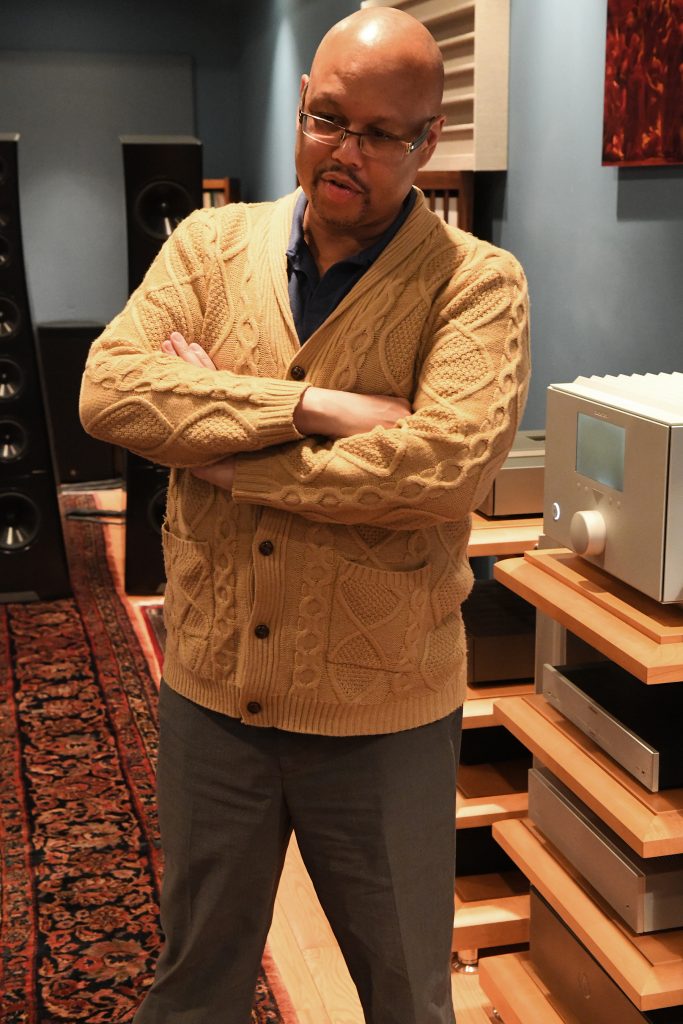
Parting Thoughts
Whether he intended to or not, turntable designer extraordinaire Louis Desjardins has thrown down the gauntlet for every other turntable designer or design team on the planet with his latest marvel. In my nearly 60 years, I have never heard a component that disappears so completely from the signal chain as the D/K/S system did in Bill's reference room or reproduce treasured LPs with quite the same degree of bewitching "at the mic" transparency and immediacy. Desjardins makes a compelling argument that, for now, the turntable/tonearm interface equation represents the next frontier in the quest for better sounding LP playback. No doubt, we will see a wave of $100K plus turntable/arm combos from the usual suspects in the coming months and years, all convinced that designing and pricing their products to compete with Discovery will get them Discovery-like realism and noiselessness.
I wish them luck! In the here and now, there is in my estimation no finer source component on the planet.
Part 1 http://positive-feedback.com/audio-discourse/an-audio-triangulation-part-1the-kronos-discovery-lp-playback-system-sui-generis/
Part 3 http://positive-feedback.com/audio-discourse/an-audio-triangulation-part-3-final-thoughts-on-the-kronos-discovery-lp-playback-system/






